|
Wristwatches Worth Collecting
by Bob Brooke
The wristwatch has
been around for nearly 150 years. For much of that time, they’ve
represented some of the world’s most accurate timepieces. Today, the
function of the wristwatch has been taken over by smartphones and
fitness bands, but the beauty of those old watches remains and in
many cases they’ve kept on ticking.
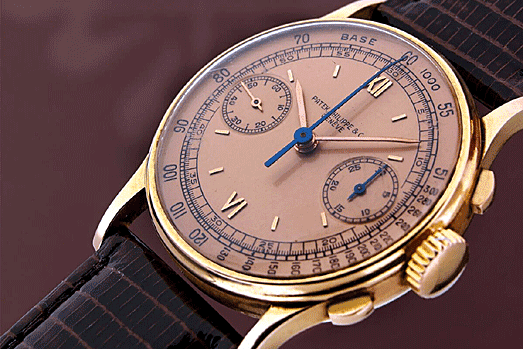
The wristwatch originated in 1868, when Patek & Philippe of Switzerland
modified a tiny pocket watch for the Hungarian Countess Koscowicz.
However, it took several years for Philippe, or any other watchmaker, to
make anything other than the popular pocket watch—plus several more
before any of them produced a wristwatch that could be priced reasonably
enough for people to buy.
As the 19th century progressed, women's miniature pocket watches were
often attached to a decorative bracelet or leather strap, to be worn on
the wrist as a fashion accessory. In a 1891, Audemars Piguet of
Switzerland created an 18mm minute repeater movement, one of the
smallest of its kind.
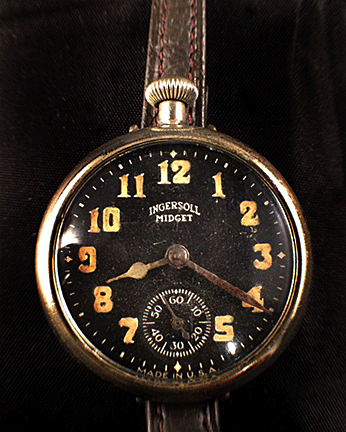 By
the 20th century, several other manufacturers introduced wristwatches,
and while ladies bought them, men didn’t because they considered them to
be effeminate. By
the 20th century, several other manufacturers introduced wristwatches,
and while ladies bought them, men didn’t because they considered them to
be effeminate.
But World War I changed all that. During the first decade of the 20th
century, Robert Ingersoll designed a line of ladies pocket watches for
the Waterbury Company. The “Midget” was both tiny and inexpensive, and
the U.S. Armed Forces ordered thousands for use by their troops,
requesting that the winding crown be moved from the 12 o'clock to the 3
o'clock position. After soldering a pair of wire loops at 12 and 6
o'clock, they attached the Midget to a band, creating the world's first
inexpensive wristwatch.
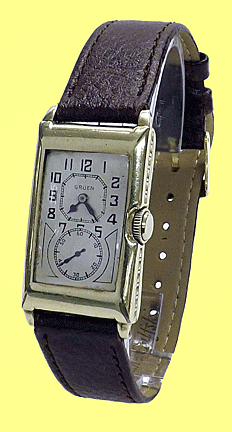 Now
Ingersoll also invented a luminous paint called Radiolite, a radium
compound, which when applied to the watch's hands and numerals, allowed
them to glow in the dark. Not only could soldiers now tell time in the
dark, they also began to appreciate the convenience of a wristwatch over
the traditional pocket watch. By the end of the war, the modified Midget
had changed men’s perception of the wristwatch. Now
Ingersoll also invented a luminous paint called Radiolite, a radium
compound, which when applied to the watch's hands and numerals, allowed
them to glow in the dark. Not only could soldiers now tell time in the
dark, they also began to appreciate the convenience of a wristwatch over
the traditional pocket watch. By the end of the war, the modified Midget
had changed men’s perception of the wristwatch.
In 1920, only 25 percent of the watches exported by Switzerland were
wristwatches; by 1934, the figure had risen to 65 percent.
Fashion and technology were also rapidly changing. Between 1915 and
1940, watch companies introduced thousands of unique styles for both men
and women, each vying for their share of a burgeoning market. By the
late 1920s, automatic self-winding and water-resistant models were in
production, and by the late 1930s,shock-resistant movements were in the
works.
Collectible Character Watches
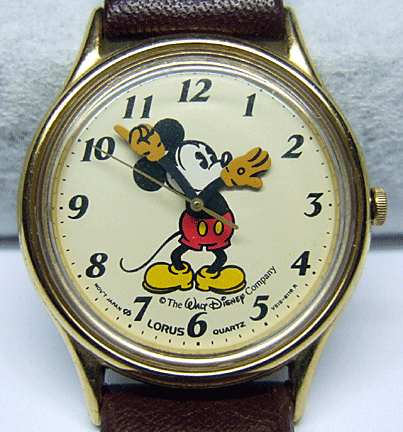 The
1930s would also introduce the character watch. In 1933, the Ingersoll-Waterbury The
1930s would also introduce the character watch. In 1933, the Ingersoll-Waterbury
Company, under exclusive license from Walt Disney, produced character
watches and clocks featuring Mickey Mouse. The watches retailed for
$2.98. Macy’s Department Store in New York sold over 11,000 on the first
day of their release. Not only was Ingersoll-Waterbury saved from the
financial ruin of the Depression, after eight weeks of production, they
added 2,700 employees to their 300-person work force. By 1935, more than
2.5 million Mickey Mouse watches had been sold.
The success of Ingersoll-Waterbury encouraged other watch companies to
begin producing collectible character watches in the 1930s. Examples
include Dick Tracy, Little Orphan Annie, Donald Duck and the Lone
Ranger. Ironically, while World War I brought wristwatches to public
favor, it would be World War II that would all but curb production, as
watch factories reorganized for the war effort.
After World War II, people had a renewed interest in character watches,
a trend which has continued to the present. Unlike watches made in the
19th century, character watches are relatively inexpensive, so more
people can buy them, especially online. For example, a 1978 Registered
Edition Bradley 50th Birthday Mickey Mouse watch can still be found for
$75.The same holds true for many watches from the 1950s. A 1950s U.S.
Time Zorro watch will cost around $125, and a 1951 Ingraham Dale Evans
sells for about $75. There are exceptions, but even these aren’t
completely out of reach. An example would be a Roy Rogers, mint in box,
which sells for about $400.
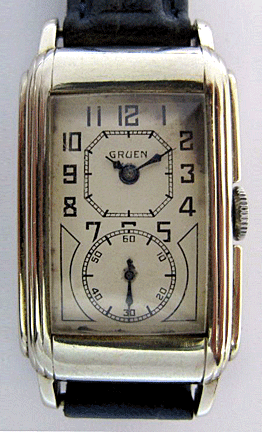 While
character watches may be fun to collect, there are some who prefer to
collect premium vintage watches. Gruen watches are especially popular.
What separates true antique watches is that all of them are
mechanical—that means they need to be wound each day. It’s because
they’re mechanical that many people shy away from them. Today, people
live in a battery-operated world and they don’t want to have to remember
to wind their watch. While
character watches may be fun to collect, there are some who prefer to
collect premium vintage watches. Gruen watches are especially popular.
What separates true antique watches is that all of them are
mechanical—that means they need to be wound each day. It’s because
they’re mechanical that many people shy away from them. Today, people
live in a battery-operated world and they don’t want to have to remember
to wind their watch.
What separates one vintage watch from another is the brand. Younger
collectors tend to favor stainless steel watches over gold or two-tone
and look for names like Omega, Breitling and Tag Heuer. The older crowd
gravitates toward the traditional elegance and style of Rolex, Patek
Phillippe, and Vacheron Constantin.
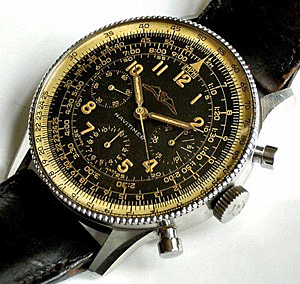 Unfortunately,
the luxury wristwatch market has been overrun by fakers. While the
Internet has opened the selection of watches to people all over the
world, it has also opened the floodgates for every crook and con artist.
Because these watches cost so much, most buyers are looking for
bargains. If the price seems too good to be true, then the watch is
probably a fake. Like luxury cars, luxury watches hold their value.
Being an antique just adds to it. Unfortunately,
the luxury wristwatch market has been overrun by fakers. While the
Internet has opened the selection of watches to people all over the
world, it has also opened the floodgates for every crook and con artist.
Because these watches cost so much, most buyers are looking for
bargains. If the price seems too good to be true, then the watch is
probably a fake. Like luxury cars, luxury watches hold their value.
Being an antique just adds to it.
<
Back to More Antique Spotlights
|
